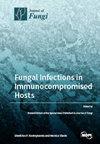The Plasma Membrane H+-ATPase Promoter Driving the Expression of FADX Enables Highly Efficient Production of Punicic Acid in Rhodotorula toruloides Cultivated on Glucose and Crude Glycerol
IF 4.2
2区 生物学
Q2 MICROBIOLOGY
引用次数: 0
Abstract
Punicic acid (PuA) is a conjugated fatty acid with a wide range of nutraceutical properties naturally present in pomegranate seed oil. To meet the rising demand for pomegranate seed oil, a single-cell oil enriched in PuA provides a sustainable biomass-derived alternative. This study describes the production of a PuA-enriched single-cell oil through the engineering of the red yeast Rhodotorula toruloides grown in glucose and a low-cost substrate, crude glycerol. The gene for Punica granatum fatty acid conjugase, PgFADX, was randomly integrated into the genome of R. toruloides without disrupting the carotenoid synthesis. In shake flask studies, the effects of three promoters (PPGI1, PNAR1, and PPMA1) on PuA production were evaluated. PuA titers of 105.77 mg/L and 72.81 mg/L were obtained from engineered cells expressing PgFADX from the PPMA1 promoter cultivated for 72 h in glucose and for 168 h in crude glycerol, respectively. Furthermore, the detailed lipid analysis revealed a high enrichment PuA in the triacylglycerol lipid structures, even without substantial modifications to the metabolic pathways. This report demonstrates the high potential of R. toruloides in the upcycling of a low-cost substrate, crude glycerol, into a value-added product such as PuA. The findings support the feasibility of using engineered R. toruloides for sustainable production of PuA-enriched single-cell oil.质膜 H+-ATP 酶启动子驱动 FADX 的表达,使以葡萄糖和粗甘油为培养基的红豆杉能高效生产出布丁酸
石榴酸(PuA)是一种共轭脂肪酸,具有广泛的营养保健特性,天然存在于石榴籽油中。为满足对石榴籽油日益增长的需求,富含 PuA 的单细胞油提供了一种可持续的生物质替代品。本研究介绍了通过对在葡萄糖和低成本底物(粗甘油)中生长的红酵母 Rhodotorula toruloides 进行工程改造,生产富含 PuA 的单细胞油。在不破坏类胡萝卜素合成的情况下,将 Punica granatum 脂肪酸结合酶的基因 PgFADX 随机整合到 Toruloides 的基因组中。在摇瓶研究中,评估了三种启动子(PPGI1、PNAR1 和 PPMA1)对 PuA 产量的影响。通过 PPMA1 启动子表达 PgFADX 的工程细胞在葡萄糖中培养 72 小时和在粗甘油中培养 168 小时后,PuA 滴度分别达到 105.77 mg/L 和 72.81 mg/L。此外,详细的脂质分析表明,即使没有对代谢途径进行实质性修改,三酰甘油脂质结构中也富含大量的 PuA。本报告证明了 R. toruloides 在将低成本底物--粗甘油--转化为高附加值产品(如 PuA)方面的巨大潜力。这些研究结果支持了利用工程化 R. toruloides 可持续生产富含 PuA 的单细胞油的可行性。
本文章由计算机程序翻译,如有差异,请以英文原文为准。
求助全文
约1分钟内获得全文
求助全文
来源期刊

Journal of Fungi
Medicine-Microbiology (medical)
CiteScore
6.70
自引率
14.90%
发文量
1151
审稿时长
11 weeks
期刊介绍:
Journal of Fungi (ISSN 2309-608X) is an international, peer-reviewed scientific open access journal that provides an advanced forum for studies related to pathogenic fungi, fungal biology, and all other aspects of fungal research. The journal publishes reviews, regular research papers, and communications in quarterly issues. Our aim is to encourage scientists to publish their experimental and theoretical results in as much detail as possible. Therefore, there is no restriction on paper length. Full experimental details must be provided so that the results can be reproduced.
 求助内容:
求助内容: 应助结果提醒方式:
应助结果提醒方式:


